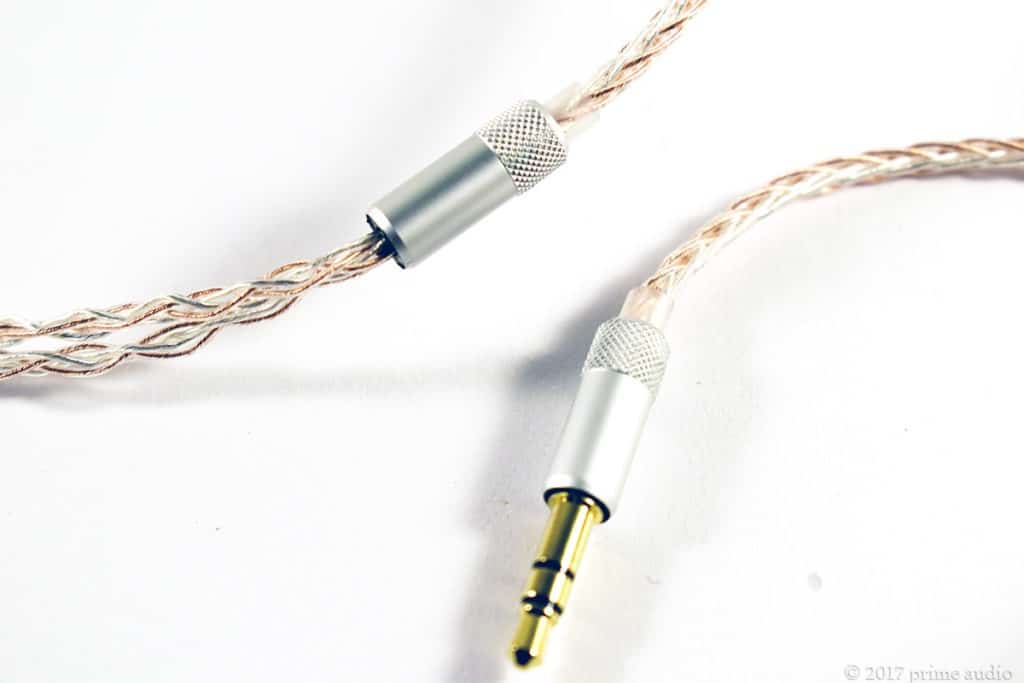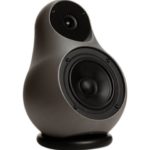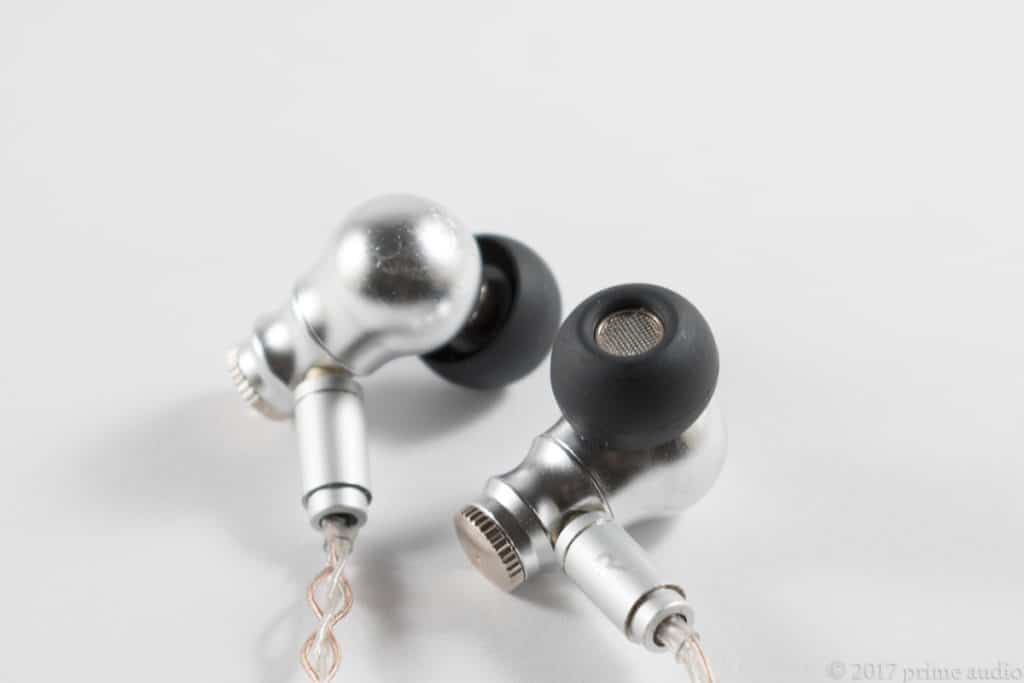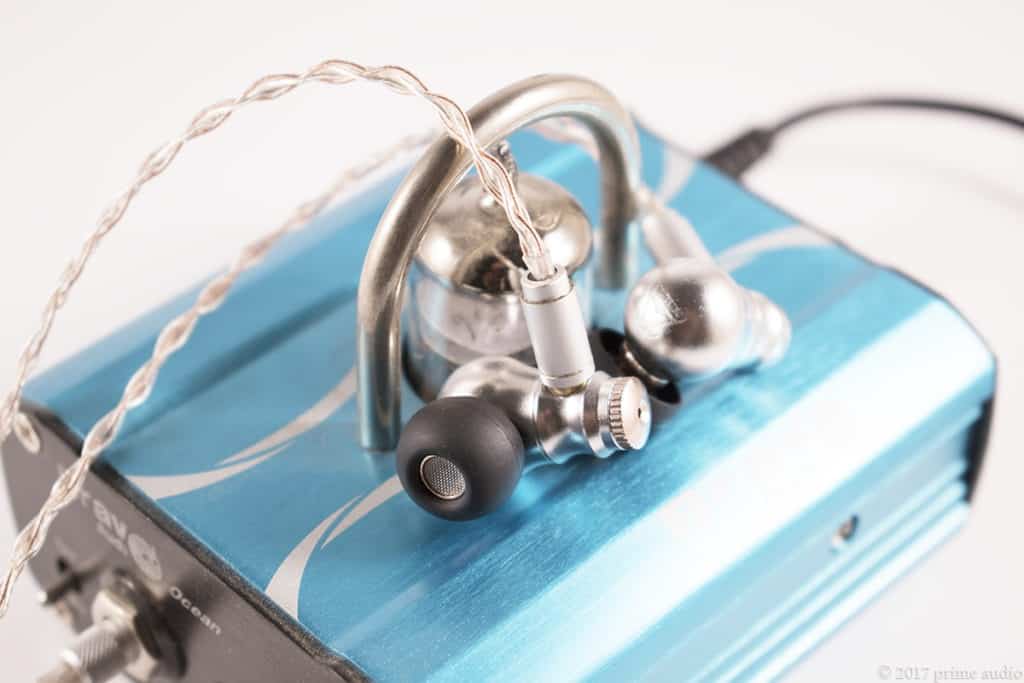Located in Zhongshan and founded in 2013, Toneking, previously known as “MusicMaker” has made quite a reputation for themselves by consistently producing quality earphones and earbuds, most notably the MrZ earbud and Shockwave III 5 driver hybrid earphone. In August 2015 the company became officially known as Zhongshan Tiankui Electronic Technology Co Ltd. The company recently released a new in-ear monitor which contains a single dynamic driver and has interchangeable front and back filters for up to nine different combinations, each one with a slightly different sound signature. Hence the name “Toneking Nine Tail”. The name is based on a mythical Chinese creature. According to Wikipedia –
Huli jing (狐狸精; literally: “fox spirit”) or jiuweihu (九尾狐; literally: “nine-tailed fox”) are Chinese mythological creatures who can be either good or bad spirits.
Today I’ll be looking at the Toneking Nine Tail and I can tell you right now that this is one of the good spirits. Read on to find out why.
The Nine-Tail is currently priced at $125 and is available from Penon Audio.
This product was provided for the purpose of an honest review. I’m not affiliated with the company and all observations and opinions here are my own.
- Sound can be customized with tuning filters
- Unique design
- Organic and natural sound
- Unusual styling may not suit everyone
Specifications
- Model: 9way / Nine Tail
- Sensitivity: 100dB / mW
- Impedance 16Ω
- Headphones sound principle: Dynamic driver
- Frequency response range: 5-40000Hz
- Plug: 3.5mm Straight Type
- Cable length: 1.2m
Packaging and accessories
The Nine Tail arrived in a small, square black box with TONEKING embossed in silver on the front. Lifting off the lid you find a semi-hard carry case secured in a slab of black foam. Everything else is found inside the carry case.
This is about as simple a packaging that you can get but it doesn’t bother me in the least as it allows cost savings that can be channelled directly into the enclosed product. Sure it’s nice to have all the fancy packaging sometimes but in this case, you’re getting an earphone with sonic abilities that punch well above its price point. But more on that later. Let’s take a gander at what’s inside:
- Toneking Nine Tail IEM
- 7N 4-wire single crystal copper silver-plated +4-wire single crystal copper MMCX cable
- Shirt clip
- 3x pairs black silicone eartip (S, M, L)
- 3x pairs white silicone eartips (S, M, L)
- 2x pairs foam eartips
- 3x rear IEM filters
- 3x pairs front IEM filters
As you can see it’s a pretty basic bundle but for most people should be sufficient. Unfortunately, all the eartips are too small for my extra large ear canals so I had to resort to some from my personal collection of silicones.
The included cable is actually really good quality, better than most in this price range. In my opinion, it’s every bit as good as the one provided with the Kinera H3 although it is significantly different. Starting with the silver coloured MMCX connectors that have an L and R denoting sides – I do wish there was some colour coding added because the letters are difficult to see and due to the unique nature of the IEM shells it’s quite difficult to pick the left and right at a glance.
There’s a silver Y-split but unfortunately no chin slider. Not that I use them anyway but I know some people get upset if there isn’t one present. There’s a clear, rubber strain relief on the lower end of the Y-split.
The cable terminates in a straight, silver, gold-plated 3.5 mm plug that has another clear strain relief. The wires are braided and although they feel quite firm and robust the cable sits really well, is quite pliable and is resistant to tangling. I like this!
Build, comfort and isolation
The first thing you’ll likely notice is the unusual design and shape of the Nine Tail, which according to the description is an original patent design, inspired by dripping water. The spherical cavity is said to curb resonance sound loss and enhance fidelity. The shape reminds me of some recently released speakers which have a similar form factor and have been receiving a lot of praise, the JERN14:
So we have a 3-tiered all metal water drop shaped housing in silver colour. They’re fairly lightweight and have the Toneking logo laser engraved on the end of the bulb. On the side of the bulb is where the various nozzles attach. They’re very easy to insert and remove, the machine threading precise and are held securely with a rubber washer. At the other end are the rear “bolts” which are equally as simple to interchange. Just next to the rear filters are the female MMCX connectors.
Build quality is excellent and the IEMs feel very robust. The edges and joins are all clean and well assembled. Not much more to say on that really.
The Nine Tail is designed to be worn over-ear. It can be worn cable-down but it’s a little awkward and not really practical. The fit is quite unusual, to say the least. They sit in my ears with the narrow end pointing upwards and the bulb at the bottom, much like a drop of water or teardrop. Inserting them takes a little getting used to but becomes second nature in a short amount of time. I find these really comfortable and can easily wear them for hours on end.
Isolation is pretty decent, assuming you have a good seal with your chosen ear-tips. I’d say it’s a slightly above average because the bulb section of the IEM fills a good part of the ear’s conch and helps to block outside noise. These are perfectly suitable for noisy environments enabling you to enjoy your music wherever you are.
Sound
Gear used for testing
- Acoustic Research AR-M20
- Benjie T6
- Samsung Galaxy Note 5
- Foobar2000 > Topping DX7
With an impedance of 16Ω and 100dB sensitivity, the Nine Tail is easy to drive and works just as well from a smartphone as it does from a good DAP and doesn’t require extra amplification.
The general sound is fairly balanced tonally, organic, natural and is quite forgiving to poorly mastered tracks but it still carries plenty of detail. It’s hard to believe that a single dynamic driver at this price can have such a masterful coverage of the frequency range and the layering and separation is similar to what I would expect from a good hybrid IEM.
Perhaps it has something to do with the unique, spherical shell design combined with a very capable driver but these have a technical ability that one expects from much more costly earphones. Not only that but because it utilizes a single dynamic driver the sound produced is very cohesive from top to bottom, from the brilliance of crisp upper treble to the low physical impact of the sub-bass.
FILTERS
Obviously, people are going to be curious about the effects of the various tuning filters. Rather than create another wall of text trying to explain it I’ll just show my measurements here. Do note that these measurements are only very roughly compensated so don’t take them as totally accurate (especially the peak at 12k) but they should at the very least give you a ballpark impression of the tonal properties of various combinations. Also, note that for most of my listening I stuck with the Silver rear + Silver or Blue fronts.




As you can see the effect of the rear filters is quite subtle, making slight changes not only to the bass but also from 1k upwards. Changing the front filter will have a more immediately noticeable reaction.
Bass
Bass has a nice impact to it and is well balanced regardless of filters used as the rear filters only have a slight effect on the overall sound. The response in the bass is linear, maintaining steady levels from the lowest notes to the upper mid-bass. Speed is good and control is very tight.
The Nine Tail had no problem at all keeping up in Katatonia’s “The Night Subscriber” and kept right on top of things without any noticeable bleed into the lower mids. Sub-bass is fantastic as well, bringing the rumble that you can feel in your ears in a seemingly effortless fashion without being too aggressive or overpowering. There is fantastic texture and definition throughout making the bass one of my favourite aspects of this earphone.
Mids
Midrange oozes with clarity, deftness and just the right amount of warmth to make them musical but maintain a natural tone. There’s great layering as well and instrument separation is handled with aplomb. Male vocals are rich, smooth and full-bodied while female voices ring with vibrancy and clarity. Despite the excellent detail retrieval the Nine Tail still manages to be forgiving and works well with just about any type of music. Listening to Ludovico Einaudi’s “The Earth Prelude” is a wonderful example of how this IEM handles the resonance of string instruments and piano.
Treble
Treble lifts up out of the spectrum with such clarity that it once again makes me wonder at the nimbleness of this single dynamic driver. It’s not aggressive but has plenty of energy and great extension. Timbre is on point and hi-hats and cymbals sound lifelike with a good sheen that never fatigues like in Keb’ Mo’s “France” with it’s forward in the mix hi-hats and cymbals.
Soundstage
Soundstage is another strength of the Nine Tail. Having the vented rear filters probably helps in this aspect, giving a sense of air and space in music. Width is good, with sounds often being perceived out past your ears and depth is satisfying too.
Aaron Copland’s “An Outdoor Overture” is a great track for highlighting the scope of the Nine Tail’s soundstage as it really transmits the sense of the large orchestra being spread out in a large space. It also shows well this IEM’s imaging capability as you’re easily able to pick the direction of the separate elements coming from among the group.
Comparisons
TFZ Exclusive King ($99 USD)
The TFZ is a very agile single driver IEM. It focuses a lot on the upper midrange which can become fatiguing if you’re sensitive in that area. It has great clarity and a clear, crisp sound. Bass has a really authoritative punch, great speed and well-defined edges.
The midrange on the TFZ is very clean with little colouring and good detail. I personally find the sound to get fatiguing quite quickly but if you prefer a brighter signature the Exclusive King would be a good choice. The 9T in comparison is more relaxed, musical and emotive and of course, has the option to customize the sound more to your preference.
Kinera H3 ($99 USD)
The H3 is a great looking IEM that has gained a lot of popularity since its release. It’s probably safe to say that the H3 is more attractive aesthetically and its conventional style of wear will be less daunting than the unusual style of the 9T. When it comes to sound though, the H3 lacks the body and fullness of the 9T.
As a result, it comes across as a bit thin sounding and at times can be harsh in the upper midrange. The H3 lacks the authority found in the 9T’s bass, the 9T having more texture and body and is more musical and organic.
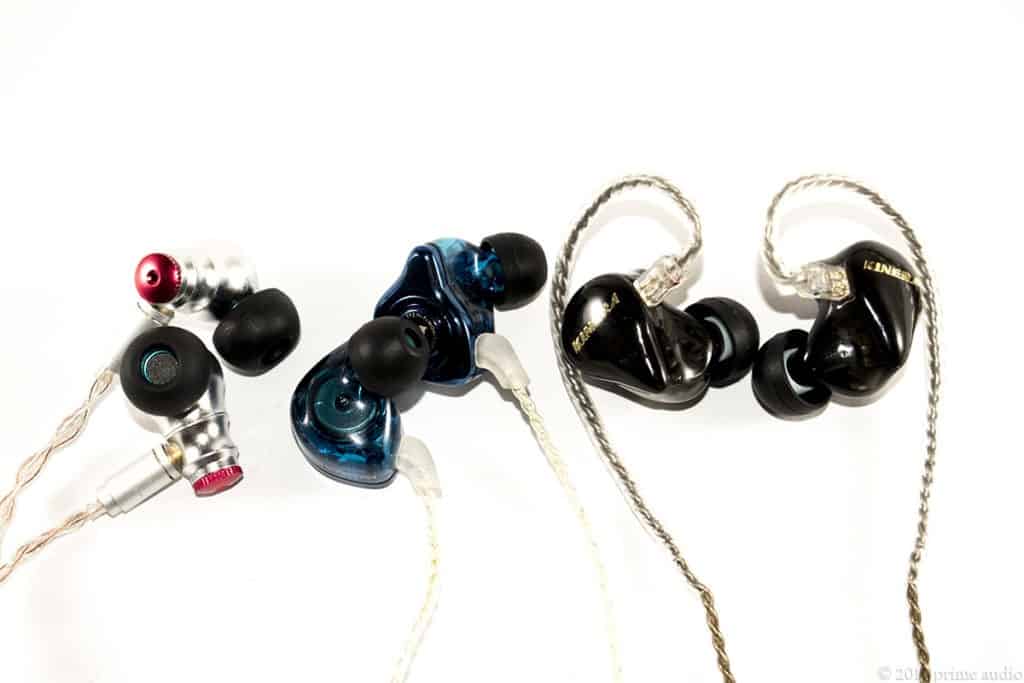
Toneking Nine Tail Conclusion
I’m somewhat in awe of this IEM. Maybe it’s just tuned very much toward my personal preference (as is the DUNU-DK3001) but I really think that there’s something special about the sound that the Nine Tail puts out.
It’s very comfortable. It’s customizable. It’s well built. It sounds incredible. I’m just a little concerned that some people might be deterred by the unique design and end up missing out on a truly stellar sounding product. This is probably the best IEM I’ve heard under $150. The sound does seem to border on mythological as the name would suggest.
This is one of those mysterious and elusive products that hits above its price point, with an ability to take on many different forms and dwells on the fringes of the spirit world. Am I losing you here? Let me bring it back to more direct and earthly terms: The Toneking Nine Tail is just awesome.
[yasr_visitor_votes size=”medium”]





